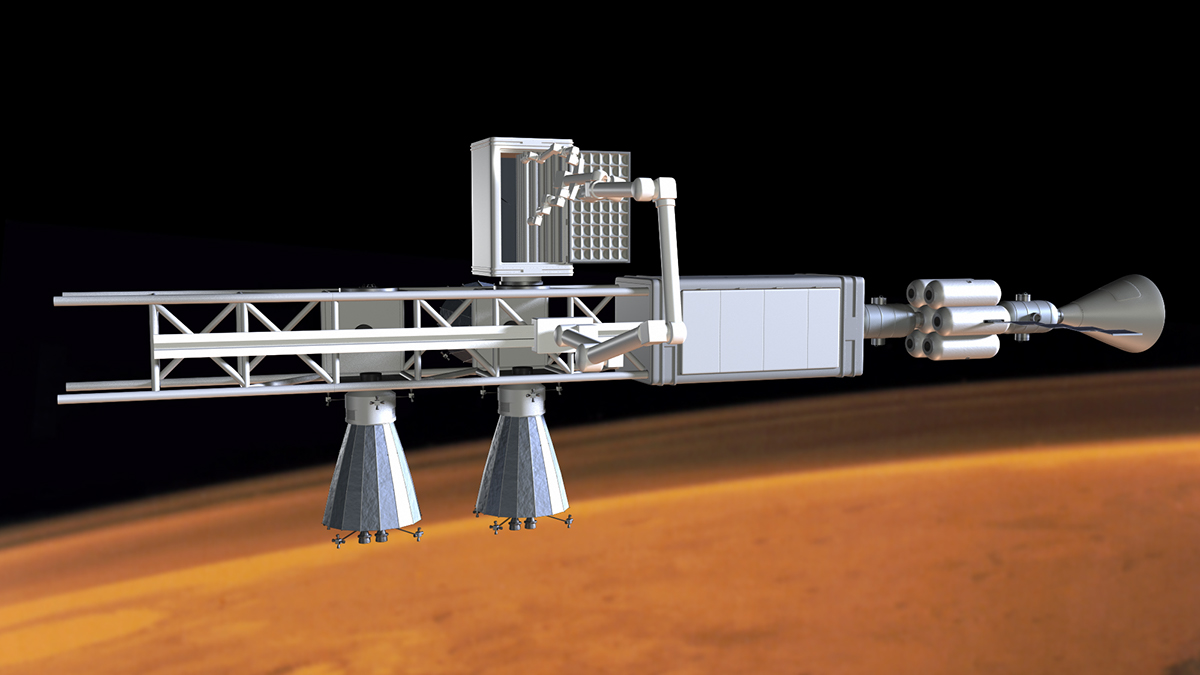IN-space transportation, infrastructure, logistics and large scale construction
Concepts – John Strickland. Images – Anna Nesterova. 6-2013
Concepts – John Strickland. Images – Anna Nesterova. 6-2013
These images are intended to show how very efficient and effective large scale operations in space can be conducted without any fundamental breakthroughs in technology, and based almost entirely on current engineering knowledge, with the exception of micro-gravity cryogenic liquid fuel handling technology which is still being developed. Masses of equipment are needed to conduct space missions beyond very brief visits and to ensure redundancy. To get this equipment where it needs to go, an integrated in-space transport logistics system is needed. Assuming that re-usable vehicles can deliver crew, cargo and fuel to Low Earth Orbit and return to the surface intact, what else do we need?
A set of fully reusable in -space vehicles to move crew, cargo and fuel from Low Earth orbit to the Earth-Moon L1 point (a very good location for a transport hub) and beyond.
A set of cryogenic propellant depots in space, where the in-space vehicles are operating, to supply them with fuel.
A means of allowing larger numbers of vehicles, cargo and fuel depots to dock and be berthed at space stations where the vehicles do not need pressurized docking ports. The Docking Truss is an answer to that problem. A truss needs to be wide to be strong, so it is “balloon cargo”, very hard to get into orbit if it is pre-assembled. However, the rectangular truss can be assembled in orbit, allowing a much more compact payload during launch. A robot arm on rails can assemble the truss section by section, laying its own rails along the truss as it goes, attaching docking positions on the other 3 sides of the truss. If a longer truss is needed, the robot can get more building components from additional cargo vehicles as they dock along the truss.
Once the truss is assembled, other vehicles and fuel depots can dock along it. Power can be supplied to the vehicles and depots from a station’s main solar array. Most importantly, the docking truss with a mobile robot arm on rails allows the easy transfer of cargo of at least 25 tons size from one type of vehicle to another without the need for human EVA’s.
Once the truss is assembled, other vehicles and fuel depots can dock along it. Power can be supplied to the vehicles and depots from a station’s main solar array. Most importantly, the docking truss with a mobile robot arm on rails allows the easy transfer of cargo of at least 25 tons size from one type of vehicle to another without the need for human EVA’s.

Way-Station
A Way-Station is a type of space station that is primarily a logistics hub, not a space laboratory. It would be dominated by the large 15 meter wide docking trusses, several hundred feet long. It would also have a large solar array and crew habitats and/or crew refuges. Way-Stations are needed in LEO, at L1, at GEO, and in Low Mars orbit (LMO). All of the other components of a Way-Station can be docked with the existing truss-work which is the only part fabricated on-site.











